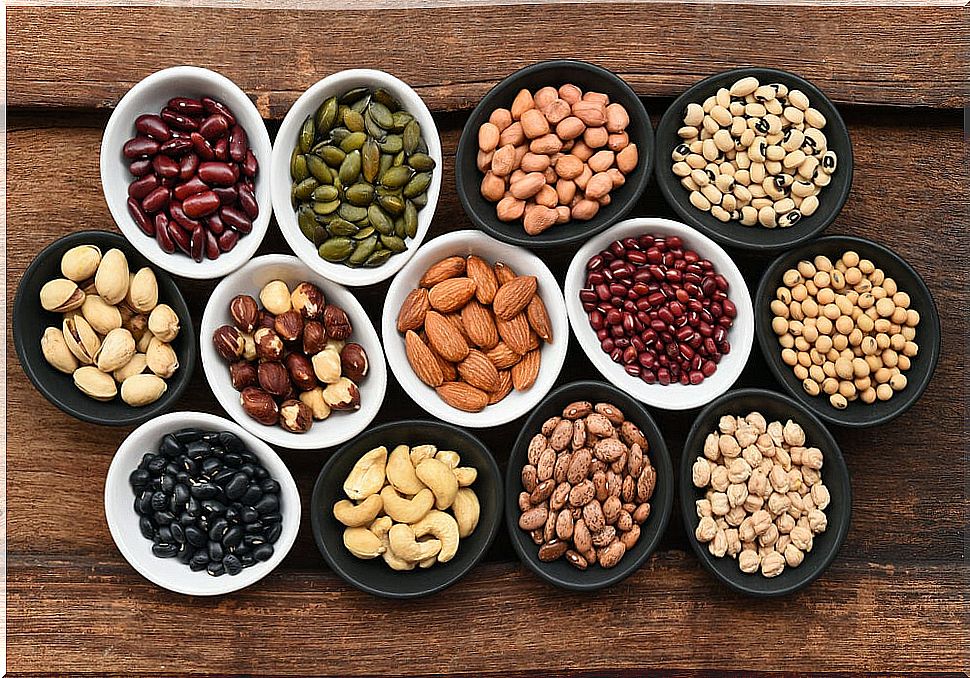What Nutrients Do Legumes Provide Us?
Next, we tell you everything you need to know about legumes, to complement your diet and get the most out of their consumption.

Due to their high protein content, legumes or legumes are basic components in the diet. These grains of plant origin are cooked and can be eaten alone or combined with other products for their best benefit. But, what nutrients do legumes provide us? In this article, we answer this question.
Legumes provide lysine. This is an amino acid that ensures proper calcium absorption and stimulates growth hormone. In adults, it maintains nitrogen balance and helps the formation of collagen, which slows cell aging. In addition, it strengthens the immune system by facilitating the production of antibodies.
Also, legumes are a source of carbohydrates and oligosaccharides, beneficial for health. They generate the glucose necessary for the proper functioning of the nervous system. Its abundant fiber content creates a feeling of satiety and improves intestinal transit.
Contributions of legumes to the body
Except for oilseeds, legumes are low in fat and rich in unsaturated fatty acids. They reduce the accumulation of lipids in the abdominal area and lower LDL cholesterol in the blood.
This last property is due to its fiber content, as stated by research published in the International Journal of Molecular Medicine . In this way, you reduce the risk of developing heart conditions and diabetes.
The intake of these grains guarantees the use of a mineral package that includes calcium, iron, copper, potassium and zinc. They also provide folic acid, niacin, and vitamins B and E.
The minerals and vitamins contained in these seeds prevent birth defects in pregnancy and counteract anemia, according to current scientific literature.
Its high concentration of copper stimulates the enzymatic activity of digestion and skin pigmentation. In addition to this, the phytochemicals in legumes have antioxidant and anticancer properties.
Ideal for meatless diets

Lentils, beans, beans, chickpeas, beans, peas, are part of the variety of legumes that can be found. By themselves they do not have greater nutritional value. Hence, they must be accompanied by cereals and other foods, to enhance their beneficial properties.
In cereals, amino acids such as methionine, cysteine and tryptophan are found, which are vital for the body. Combining grains with cereals raises the nutritional value of the former to values comparable to that of meat. The same happens when legumes and vegetables are mixed.
Legumes combine very well with all kinds of edibles and can be served at any time of the day. Together with chicken, fish or other types of meats, they lead to a balanced and healthy diet. For example, soy is one of the most complete legumes in terms of proteins, lipids and carbohydrates.
In fact, soy provides the body with 8 of the 10 essential amino acids. Accompanied by rice, wheat, milk or eggs, soy can compensate for the remaining amino acids. However, its consumption in grain is not popular. From soybeans, an oil is extracted that is widely marketed.
Other nutrients that legumes provide

The consumption of legumes prevents cardiovascular diseases, improves the lipid profile and contributes to regulating blood pressure. Additionally, it regulates platelets and the proportion of sugars in the bloodstream. It also modulates inflammatory processes. All this is possible thanks to its nutrients.
One of the most present is magnesium. This mineral is responsible for the formation of bone structures, such as bones and teeth. It also has carbohydrates such as starch, as well as simple sugars, such as glucose, steachyose, sucrose, and fructose.
One of their great advantages is that they have low sodium doses. This mineral can be harmful when ingested in large quantities in the event of a previous vascular problem, according to a study published in Nutrients . This makes them a completely suitable food for those who suffer from the heart, overweight or diabetes.
How much should be consumed? Specialists suggest about 60 grams, for healthy adults; after cooking, these are transformed into 200 grams or 250 grams. They can be ingested 2 or 3 times a week. It is ideal to have legumes warm in winter and cold in summer.
Preparation mode

Now that we know for sure what nutrients legumes provide us, we should talk a little about how to prepare them. They only need to be cooked in water, preferably in a pressure cooker, so that they retain their nutrients. The cooking time will depend on its hardness. However, it is recommended, after selecting the dry beans, to soak them for 8 to 12 hours. The ideal is usually to add the salt at the end or towards the middle of cooking.
Soaking and changing the water will prevent them from causing flatulence or an upset stomach. The use of its proteins will depend on the preparation and the foods with which they are combined.
Include legumes more often
As you have seen, legumes are foods that provide very high quality nutrients. For this reason it is beneficial to include them in the diet on a regular basis, at least 1 or 2 times a week. In this way, a better functioning of the organism will be guaranteed.









